#and this movie is why I find the Death in Miami scene at the bar so funny
Explore tagged Tumblr posts
Photo


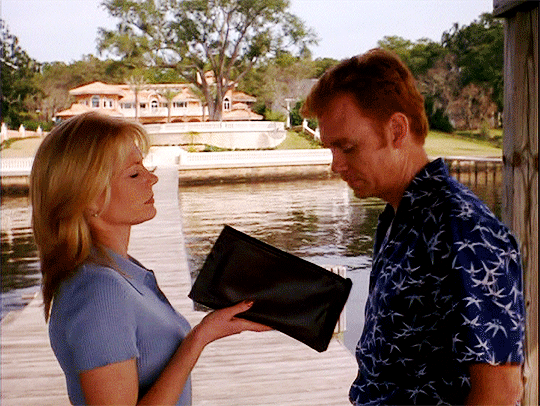
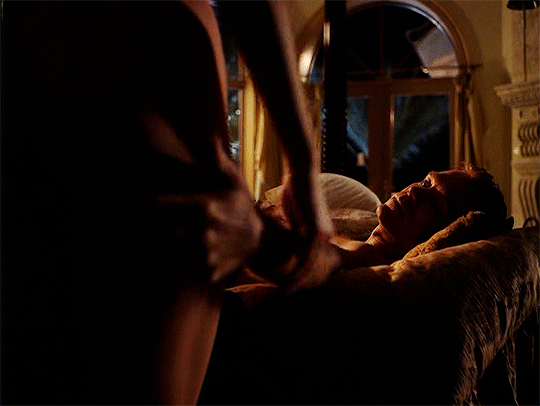
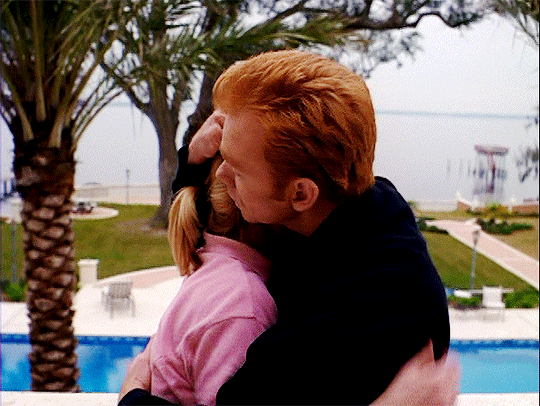
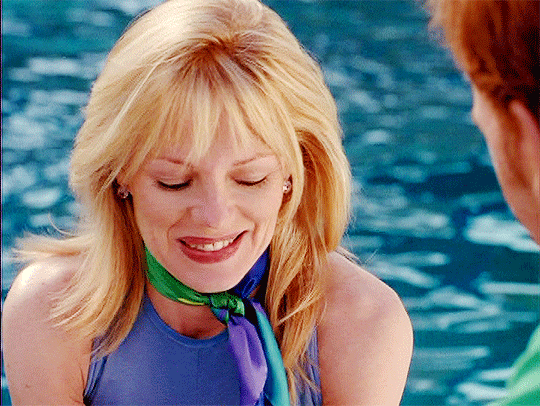

Marg Helgenberger & David Caruso in “Elmore Leonard’s Gold Coast” (1997)
#Marg Helgenberger#David Caruso#Gold Coast#mine#and this movie is why I find the Death in Miami scene at the bar so funny#or the end when Catherine and Horatio look at each other a tiny bit too long#he calls her Honey a lot in this movie ^^'#q
27 notes
·
View notes
Text
Goldfinger - #24WeeksofBond

We continue our Bond marathon with an absolute banger of a movie - Goldfinger. When you think of James Bond, this movie might come to mind. There are so many classic lines, scenes, and characters in this movie that it is really hard to make the case of this film not being one of the best Bond films ever. In fact, until Goldeneye, this film was the bar when it came to James Bond. The franchise saw many crests in its lifetime, but unfortunately, it would never reach this level of excellence. Now a days, we have a few Daniel Craig movies to insert into the “Best James Bond Movie Ever” conversation in Casino Royale, and Skyfall. This is Sean Connery at his absolute peak.
Honestly, I’m finding some difficulty in unpacking all of this because this film is just so precious that I don’t want to do this blog an injustice of underselling this movie. This film has a wonderful, easy to follow plot, some cleverly crafted writing, and characters that have lasted forever. In some ways, this film could be viewed as the Bond film that started Bond as we know it today. Dr.No, and From Russia With Love hit a few singles for the franchise, but Goldfinger comes to the plate and hits a home run putting the Bond franchise in a very comfortable lead and giving it the momentum it needed to last as long as it has. If not for Goldfinger, Bond could have only lasted for a few more years.
Sean Connery is hitting on all cylinders here. He seems to have all the swag and confidence in the world, having played Bond twice now he really seems to have a grasp on this character. Remember that Connery is the man who made Bond, Bond. There was no man before him to learn from, only the fictional James Bond you would find in the books. And for a relatively unknown at the time...that is quite the responsibility to take on a franchise that everyone is expecting to be amazing, when nobody knows who you are. Well, Sean Connery did and now here he is at the top of his game.
Even starting with the pre-title sequence...a classic scene where Bond enters from the water in a wet suit and lays out some plastic explosives...only to take the wet suit off to reveal a white tuxedo that still has the steam coming off of it from the dry cleaners. I mean, that’s Bond in a nutshell right there. After this, we then move into the title sequence that would set a trend for Bond movies for decades - a title song. Shirley Bassey sets the tone of the film with an intoxicating, and eerie performance of “Goldfinger” that kind of stays in your head for a few hours after hearing it.
The film opens in Miami where Bond is being put up in a high end resort to keep an eye out for a man named Auric Goldfinger (Gert Fröbe). Apparently Goldfinger has sprung the curiosity of the British Government because of how much gold he is moving around the country. Bond sees Goldfinger playing Gin Rummy with a guy, and finds his suite to discover that he has been cheating at cards with his paid side-piece Jill Masterson spying on his opponent. Of course Bond breaks up the party and makes Goldfinger start losing which leads us to lovely Jill Masterson being asphyxiated by gold paint. Classic scene...however I’m curious about the dig at the Beatles...(Just as bad as listening to the Beatles without ear muffs.). Oddjob must’ve been a Beatles fan which is why he knocks out Bond right after this comment.

After Jill’s death, M puts Bond on the mission to find out all he can about Goldfinger and to figure out what he is up to. So Bond meets Goldfinger for a relaxing game is golf. Man oh man do I love this scene. A classic set up between Bond and villain where villain knows that this ain’t a coincidence so they both start trying to play each other. Bond whips out his big gold bar and Goldfinger ups the ante to put it on the line, exercising strict rules of golf to give himself an advantage. Bond expertly switches Goldfinger’s golf balls before the final hole, sealing the victory for Bond. Just so simplistic, & fun to watch. I love Bond’s relationship he develops with his caddy.
To spare you the lengthy, scene by scene description of the film, it turns out Goldfinger is trying to set off an atomic bomb in Fort Knox which would drive the value of his gold up by hundreds of thousands of pounds, all the while trying to set this up as a basic bank robbery. Bond finds out about Goldfinger’s operation while spying on his facility late at night where he will eventually get caught and tied up to a table with a laser slowly moving up to his crotch. Again, a classic scene where Bond says “You expect me to talk?” to which Goldfinger replies “No Mr. Bond, I expect you to die!”. You just can’t write that any better.
After Bond convinces Goldfinger that he is worth more alive, Bond is tranquilized and later wakes up to the site of one Pussy Galore (Honor Blackman). She may be more famous by her name, but this is the first time we see a strong women who isn’t just good looks as the leading female. This will also start the trend of naming female characters as puns. (Holly Goodhead, Chu Me, Jenny Flex, Xena Onatopp, etc.). Not that that was a crucial part of the Bond franchise, but it definitely became a signature that was eventually smoked out come the Daniel Craig era.
Honor does a fine job here, I wouldn’t say her character is written the best or that her character is given the proper chance to shine, which is why I would say that her performance simply is remembered by her name alone. Pussy Galore sounds ridiculously vulgar now a days, but back in the 60s it wasn’t. Her originally name was supposed to be Kitty Galore, but they opted for Pussy Galore, because Kitty Galore was too vulgar...lol.
What I REALLY love about this film is Oddjob (Harold Sakate). Oddjob is the quintessential quiet muscle man of a henchman who has a signature weapon in his top hat. He can frolf with his hat to kill people, basically. Oddjob was an olympic weightlifter and professional wrestler named Tosh Togo. He was stout, bulky, and stoic and really made you buy into the threat of his strength and frolfing skills. This of course comes to a head in the end when Bond is handcuffed to the atomic bomb in the vault with Oddjob and they battle it out. I love these old fight scenes where the only thing playing in the background is the sound of the bomb timer. This gives the fight more urgency as it’s an added layer of danger.
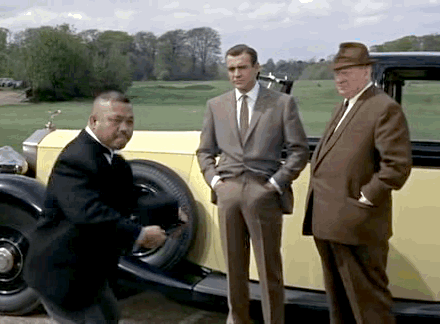
Another classic addition that would influence future Bond films is the Aston Martin car. Q is unleashed in this film as the over worked and underpaid government worker who makes gadgets, and who doesn’t have time for Bond’s games. Q tells Bond about his new car and lets him know there is an ejector seat to which Bond says “Ejector seat? You’re joking!” and Q brilliantly says “I never joke about my work, 007″.
I mean, everything I am pointing out here is groundwork for the future of the Bond franchise. The exotic cars, the dangerous henchmen, the women who had jerks for parents in naming them, the theme song, the list goes on and on...Goldfinger, to me, is the bar as far as James Bond films go. I love this film so much where it was very hard to say that any other Bond film was better. This easily sits in my top 3 with Goldeneye and Skyfall.
This film would be the third and best film of the Sean Connery era. Connery would still see success in his films, but tensions between him and the studio execs would start to mount as Connery was fearing the type casting that he might see because of his longevity with the character and getting tired of the grueling schedule. (His first three films came out in three years). But despite all that, Goldfinger will live on forever as one of the best Bond films in the history of the franchise.
What did you think, and where does it sit in your top three?
Reviews from Friends:
Jamie Gray
Not my favorite Bond movie, but DEFINITELY my fav and the best Bond theme song except for The world is not enough. I said what I said.
24 Weeks of Bond will continue next Monday with -
The Spy Who Loved Me
0 notes
Link
Now that we are halfway through “The Assassination of Gianni Versace,” we can reasonably infer that there are no more bodies to fall. The fashion designer Gianni Versace was shot to death outside his Miami Beach villa in the season premiere. The Chicago real estate tycoon Lee Miglin was tortured and bludgeoned, and a New Jersey cemetery groundskeeper, William Reese, was fatally shot, execution-style, in Episode 3. Two more men were knocked off in Episode 4: the Minneapolis architect David Madson and the Navy veteran Jeff Trail.
So as this second season of “American Crime Story” works its way backward in time, we have moved past the body count to what should be the most interesting moment in any serial killer’s story: the moment before he starts to kill.
Yet frustratingly, five episodes in and with four more go to, we are barely any closer to knowing what turned Andrew Cunanan into a pathologically mendacious psychopath, much less a killer.
There is still time to explore that question, but by structuring this narrative in reverse chronological form, the show’s creators have demanded a great deal of patience from viewers — and taxed the patience of this one — as they’ve asked us to bear witness to ruthless, grisly violence.
So far, I don’t feel my patience has been rewarded. I’ve given this season credit for some unforgettable characters — especially Marilyn Miglin, the tycoon’s widow, and David Madson, the semi-closeted architect (thanks in large part to exceptional performances by Judith Light and Cody Fern). But I increasingly find Andrew Cunanan, as portrayed by Darren Criss, to be more an irritation than an enigma. His self-absorption, narcissism, casual cruelty, lack of empathy and penchant for self-pity have not been leavened by any redeeming qualities.
To be frank, I have come to find him so charmless that I nearly cringe any time he appears onscreen. I do not care for his petty lies — the Walter Mitty world in which he is the scion of a pineapple magnate, the builder of sets for the movie “Titanic,” the owner of a fabulous condominium in San Francisco — and, what’s worse, I’m starting to lose interest in how he turned into a killer. It will be a real challenge for this series to create a back story that makes Cunanan’s crimes explicable.
Unlike Episodes 3 and 4, which were effectively character studies of two lives upended by Cunanan’s malevolence, Episode 5 doesn’t have a singular focus. It begins in Milan, where Gianni Versace announces to his sister, Donatella, and to his partner, Antonio D’Amico, that he plans to come out, through an interview in the gay magazine The Advocate. From there, it jumps to Minneapolis, where Jeff Trail, Cunanan’s first victim, works at a propane plant, having been forced out of the Navy for being gay. It then moves backward in time to San Diego, where Trail, in his first visit to a gay bar, meets Cunanan.
The episode’s narrative arc connects the coming out of two men — Versace and Trail — who, other than being gay and getting killed by Cunanan, seem to have little in common.
Versace is depicted as wanting to show gratitude for being alive despite having received a diagnosis of what we’re led to believe is HIV, the virus that causes AIDS. (The Versace family has disputed the notion that Versace was HIV-positive, as hypothesized by the journalist Maureen Orth in her book “Vulgar Favors,” on which the series is based.)
Versace shares his plans with his sister, who is worried that Versace’s coming out as gay will hurt the fashion empire he has worked so hard to build. She worries that “the rock stars, the actors, the royalty whose endorsements we cherish — they might not want to be associated with us.”
“You live in isolation, surrounded by beauty and kindness,” she tells him. “You have forgotten how ugly the world can be.” Their exchange reminds us how recently spheres that now seem safely liberal — Hollywood and fashion — were still hostile to open gayness, an aversion that is far from vanished today.
We first meet Trail at the propane factory where he works. A co-worker, an ex-Marine, learns that Trail worked on an aircraft carrier that was decommissioned after the first Gulf War. Trail says he misses the military life, and regrets leaving. The Marine, who was enlisted, is startled to learn that Trail, a Naval Academy graduate with two siblings in the military, left a promising career as an officer. Trail flies into a rage, shouting, “It was my decision!”
Trail’s back story turns out to be more complicated.
In 1995, he broke up a homophobic attack on a gay sailor who would otherwise have been beaten to death. For his valor, he was quickly suspected of being gay himself, and subjected to increasing harassment. In one cringe-inducing scene, he tries to cut off a tattoo for fear that it could be used by military investigators to identify homosexuals who have had hookups aboard the aircraft carrier; in another scene, he puts on his dress whites and comes close to hanging himself.
It was the time of Don’t Ask, Don’t Tell, the Clinton-era policy in which gay and lesbian service members were ostensibly tolerated as long as they did not come forward. The compromise was an uneasy and often dishonest one, embodied by a scene in which Trail is given a comic-book-style “training guide on homosexual conduct and policy.” Its title, “Dignity and Respect,” seems like a cruel joke.
Trail leaves the military and decides to give an interview to CBS News — his face is obscured — in which he comes forward about the agony of being gay in the military. If he hadn’t stopped the gay-bashing attack, he says, “no one would have suspected me” and his life wouldn’t have been ruined. “I did a good thing, and I can’t tell you about how many times I’ve dreamed about taking that moment back and letting him die.”
That interview is juxtaposed with the far more positive disclosure in which Versace tells The Advocate about D’Amico. It is an affirming and empowering moment, one that demonstrates the obvious point that coming out, while never easy, is vastly easier for some than for others.
But what does it add up to? That Versace and Trail both made sacrifices to come out as gay men does nothing to elucidate for us why they were targeted by Cunanan, or whether anything other than cruel coincidence cut short their lives at his hands.
We see glimpses of Cunanan’s potential to be charming, when he helps to usher Trail into the gay world at a bar. (Trail’s first time, as he reveals.) We learn that the romance, if there was any, quickly wore thin. When the two reconnect in Minneapolis a few years later, Trail’s sympathy is nearly depleted: Cunanan sent his father a postcard outing him, but claims that it was an innocent mistake. Back at Madson’s apartment, Cunanan gives Madson an expensive watch and declares: “You are the man that I want to spend the rest of my life with. Will you marry me?” Madson looks horrified.
“We can’t get married,” he says. “We can’t. You understand? Even if we could, we can’t.”
Madson urges Cunanan to stop telling the crazy stories. But Cunanan can’t let go of his delusions. “I told you I’m going to start a new life in San Francisco, and I just need someone to share it with,” he says. He is at his most vulnerable, but instead of doing what a sane person would — seek out the solace of friends and family, and perhaps professional help — he can’t let go.
He hovers outside Madson’s apartment, watching in anger and envy as the architect brings another man home. Later, in Trail’s apartment, he rummages through the closet and takes out Trail’s dress uniform, enraging him. “I don’t know you,” Trail shouts. “I don’t know what you stand for. I don’t know who you are. You’re a liar. You have no honor.” Confronted by the truth, Cunanan tears into Trail, calling him “a washed-up queer” reduced to “bitching about how you could have been someone.”
He continues: “When I found you that night at the bar, I was there for you, I saved you.”
Trail replies: “You destroyed me. I wished I’d never walked into that bar. I wish I’d never met you.”
We have yet to learn how their relationship soured, or what made Cunanan turn from cruelty to bloodthirst. But at this point, his character is so deranged, vile and incorrigible that I’m not sure I care to know.
0 notes
Text
Glen Coco’s Top 10 Films of 2016

Another year has passed and although it wasn’t the greatest year for film, there were still several that stood out. Here are my picks for the top 10 films of 2016. But first, the runners up:
Runners Up
-10 Cloverfield Lane
-Fences
-Hell or High Water
-Loving
-Nocturnal Animals
-Sing Street
-Sully
And here’s the top 10!
#10b (Bonus Track): The Witch
Director: Robert Eggers
Starring: Anya Taylor-Joy, Ralph Ineson, Kate Dickie
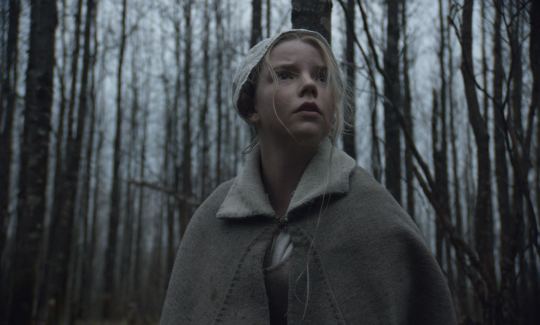
The fact that a horror movie is anywhere near my top 10 list is astounding, but The Witch is a rare gem in a genre usually composed of cliches and cheap thrills. This is one of the most beautifully photographed movies of the year containing countless striking shots and director Robert Eggers creates a mood of almost unbearable tension. The film follows a family who’s been banished by their community to live in a remote part of the woods where strange things begin to happen and we’re never quite sure whether it’s mere paranoia or something supernatural. What’s so impressive is that we see very few little violence or traditionally scary images, yet Eggers always makes you feel like such elements are just around the corner. It’s been said before, but it’s what you don’t see that’s terrifying. The reason why this film isn’t in the top 10 is because of audio problems and poor line delivery. The story is already ambivalent, but you’ll find yourself even more lost because you miss half the dialogue. That said, it’s still a pleasure to look at and definitely worth an honourable mention.
#10: Silence
Director: Martin Scorsese
Starring: Andrew Garfield, Adam Driver, Liam Neeson

No, it’s not Martin Scorsese’s best film, but even his lesser works are better than most movies out there. Silence is officially a box office flop and admittedly its pacing is frustrating at times, but its effect is undeniable and will leave you thinking about it well after the credits roll. The movie follows two Jesuit priests (Andrew Garfield and Adam Driver) as they search for their mentor (Liam Neeson) who’s apparently given up the faith in a 17th Japan that was ruthless toward Catholics. Though the sceenplay could’ve been a bit tighter, like The Witch the movie looks marvelous thanks to Scorsese and cinematographer Rodrigo Prieto. Scenes of the priests sneaking through caves, Catholics crucified over the ocean or chilling events seen through the bars of a prison cell are all visually stunning if not disturbing. And the dilemma of whether it’s moral to allow others to die just to uphold one’s faith is an important question here and one that’s handled with care.
#9: Moonlight
Director: Barry Jenkins
Starring: Trevante Rhodes, Ashton Sanders, Alex Hibbert, Mahershala Ali, Naomie Harris, Andre Holland
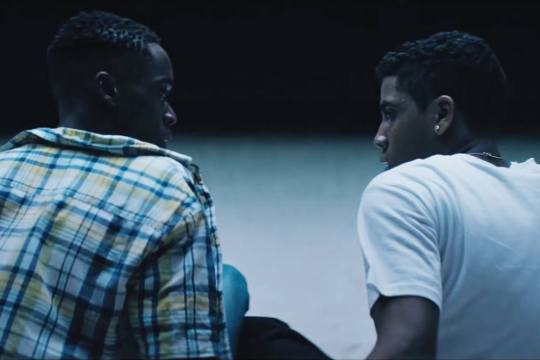
Moonlight tells the harrowing story of Chiron, a gay African American growing up in the projects of Miami. Unfortunately, in a place like this where machismo reigns supreme, Chiron seemingly has no chance; it’s a tragic situation. Impeccably acted by all three performers who play Chiron as well as the supporting cast, especially Naomie Harris as his drug-addicted mother, the story is told in three different time periods, enhancing the idea these problems can’t be solved overnight and that people from these neighborhoods do, in fact, grow, mature and have fascinating, complicated lives. Directed with poetry and grace, covering both the tenderness and darkness of this character’s life, Barry Jenkins brings everything together perfectly with a final, almost real time, sequence completely devoid of action, but rich in honesty, vulnerability and feeling with Trevante Rhodes and Andre Holland holding your unwavering attention. We’re entranced by the implications of their meeting and eagerly await the outcome.
#8: The Edge of Seventeen
Director: Kelly Fremon Craig
Starring: Hailee Steinfeld, Haley Lu Richardson, Blake Jenner, Woody Harrelson

Although the problems Nadine (Hailee Steinfeld) faces in The Edge of Seventeen pale in comparison to those of other characters in this list, they’re still realistic, identifiable and fitting for a 17-year-old high school student. Nadine’s already awkward, lonely and isolated from her classmates and she has to deal with her only friend dating her older, more popular brother. It sounds like a recipe for a paint-by-numbers teen comedy, but writer/director Kelly Fremon Craig provides one of the most honest and witty screenplays of the year. Steinfeld is quite possibly the best 20-and-under actor in Hollywood today and was completely snubbed for this complex role as a precocious young lady who’s too smart and witty for her own good. She’s hilarious in this role, but also naive and vulnerable and it’s these qualities under the surface that make her such a sympathetic character. Woody Harrelson is exceptional playing the hard-edged mentor teacher who cares about her deep down despite his tough love. The verbal sparring between the two is a delight to witness in an equally delightful film.
#7: Popstar: Never Stop Never Stopping
Director: Akiva Schaffer, Jorma Taccone
Starring: Ander Samberg, Akiva Schaffer, Jorma Taccone

Considering the rest of this list, no, this isn’t a joke. Popstar: Never Stop Never Stopping is the funniest movie of 2016 and one of the funniest movies in recent memory. Written and directed by Akiva Schaffer and Jorma Taccone, 2/3 of the Lonely Island comedy group, they’re joined by their partner Andy Samberg in acting and writing efforts to bring us this hilarious mockumentary and biting satire about the pop music industry. Producing countless belly laughs through priceless one-liners and some of the funniest sight gags you’ll see, Popstar focuses on the rise and fall and rise of The Style Boyz and all the infighting that comes with that. And I can’t forget to mention the outrageously funny original songs. Any movie whose song contains the lyrics “I wanna fuck you like we fucked up Bin Laden” has to be good.
#6: Manchester by the Sea
Director: Kenneth Lonergan
Starring: Casey Affleck, Lucas Hedges, Michelle Williams
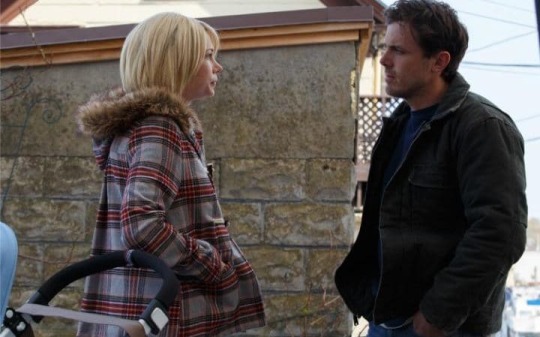
Manchester by the Sea is a minor miracle. Here’s a film whose protagonist has ruined his life through a horrifyingly plausible accident, abandoned his titular coastal hometown due to overwhelming grief and guilt and now must return to take care of his nephew following his brother’s death, yet somehow writer/director Kenneth Lonergan manages to avoid melodrama and manipulation. This is a film with emotional complexity and gorgeous naturalism in a story with no easy answers or moments of eye-opening catharsis. The whole cast is extraordinary, but Casey Affleck stands out playing Lee Chandler who displays flat, distant behavior on the outside, while simultaneously conveying the emotional turmoil going on within, trying to deal with one tragedy after another. It’s an impressively restrained performance for a character who we come to sympathize with more and more as the plot unfolds. The ending won’t please everyone, but it’s honest, human and entirely realistic just like the film.
#5: 20th Century Women
Director: Mike Mills
Starring: Annette Bening, Greta Gerwig, Elle Fanning, Billy Crudup

20th Century Women takes place in the late ‘70s when the cultural identity of America was in a state of flux. This feeling permeates the film and even though it concerns a small group of seemingly insignificant characters, the film is framed within a much larger history and this coupled with the revelation of the characters’ fates far down the road gives the proceedings a heightened sense of importance. Annette Bening, another Oscar snub, is perfect in this role as an aging mother trying to navigate such a strange world while attempting to reconcile her conservative tendencies and wariness of modern life with her liberal values and open-mindedness. This complicated, 3-dimensional character recruits some lodgers and neighbours to help raise her boy, but these people are just as complicated, flawed and, indeed, beautiful themselves, especially Abbie played by the magnetic Greta Gerwig. The movie has little plot, but you fall in love with the characters and their struggles and that’s really what’s important.
#4: La La Land
Director: Damien Chazelle
Starring: Ryan Gosling, Emma Stone

The people involved in making La La Land should just be thankful the film was produced. A completely original movie musical filled with jazz doesn’t sound like the most lucrative products for today’s audiences. But with the help of Damien Chazelle, who demonstrated his wizardry behind the camera and helped bring jazz to the forefront with his extraordinary Whiplash, and two of the biggest stars in Hollywood today, Emma Stone and Ryan Gosling, the movie has become a technical marvel and a smash hit. Bringing to mind the classic old Hollywood musicals, La La Land tells the story of two struggling artists with Gosling and Stone making us invested in these struggles every literal and figurative step of the way. Containing breathtaking dance numbers, infectious original songs and some truly show-stopping moments, the movie is fun and exhilarating from start to finish and the chemistry between Gosling and Stone is possibly the best you’ll see in 2016. It’s impossible to walk out of this movie without a smile on your face.
#3: Arrival
Director: Denis Villeneuve
Starring: Amy Adams, Jeremy Renner, Forest Whitaker

Arrival is a realistic and logical take on the fascinating premise of first contact. Denis Villeneuve, one of the best directors in the business, is an expert at creating and maintaining an almost suffocating level of suspense with the help of his distinct camera work, steady pacing and nerve-wracking music. The snubbed Amy Adams is brilliant as Louise, mourning the loss of her daughter while facing the herculean challenge of communicating with aliens. Adams has a way of making Louise quiet, contemplative, even sad without exuding weakness. Unlike lesser films where a communication problem like this is solved in minutes, Arrival presents it as a grueling process involving linguistics and translation that Louise and Ian Donnelly (Jeremy Renner) must go through in order to make even the smallest breakthrough. This aspect of the film is entirely convincing and even educational. The ending is a real mind bender that’s executed elegantly and adds another thought-provoking layer to an already dense narrative. The best moment, though, is a scene where a helicopter’s approaching a spacecraft hovering in the distance. The view of the object in the background coupled with the unnerving music and lack of dialogue is hypnotizing and brings to mind imagery from 2001: A Space Odyssey. It’s a truly mesmerizing sequence.
#2: Lion
Director: Garth Davis
Starring: Dev Patel, Sunny Pawar, Nicole Kidman, Rooney Mara

The most important thing about a story is that you’re invested in the characters and no other movie of 2016 makes you as invested in its lead as Lion. The thought of falling asleep on a random train and waking up hundreds of kilometers away from your home is terrifying, especially if you’re a young child in a densely populated country like India who doesn’t know where home is. But that’s the true story of Saroo, ably played by the young Sunny Pawar and the older Dev Patel. Remarkably, the adult Saroo manages to use Google Earth to find his home and long lost family. All aspects of the film work from the directing to the writing to the wonderful performances. It’s a pleasure going on this extraordinary journey with Saroo. It all culminates in the most satisfying ending of a film in 2016 that challenges you to keep a your eyes dry. You won’t be able to. This is the most inspirational film of the year.
#1: Everybody Wants Some!!
Director: Richard Linklater
Starring: Blake Jenner, Zoey Deutch, Glen Powell, Tyler Hoechlin

It wasn’t nominated for anything, it’s not groundbreaking and no one even saw it, but, dammit, Everybody Wants Some!! is the most satisfying movie experience of 2016. No, it’s not as good as Dazed and Confused, its spiritual prequel, but it’s pretty damn close. The film follows a group of university baseball players in the days leading up to the first day of school. That’s it. Writer/director Richard Linklater understands youth, knows how people talk and has a firm grasp of time and place and he combines all three of these qualities perfectly here. There’s no real plot to speak of but Linklater is that rare filmmaker whose dialogue is so engrossing and whose characters are so relatable that we can forgive him and just enjoy the ride. He also captures that unique time period of the late ‘70s and early ‘80s, just like 20th Century Women, where cultural identity was so undefined. He showcases this with a great, eclectic soundtrack composed of rock, pop, rap, new wave and country tunes and even the players go from a disco to a country bar to a punk rock show all in one weekend. But what makes this movie work is the baseball players themselves. Sure, their goals are similar to most college-aged men: have sex, drink beer and compete with each other over everything. But there’s so much more to these characters who sound and act like real humans with varying traits, opinions and emotions. Their macho exteriors don’t drown out their insecurities and insight into their own lives and surroundings. Most importantly, though, you’ll have a blast watching this movie. There’s not a dull scene or exchange within and it’s often laugh-out-loud funny. Hell, it’s literally and figuratively one big party and it’ll make you want to jump through the screen and join in.
0 notes